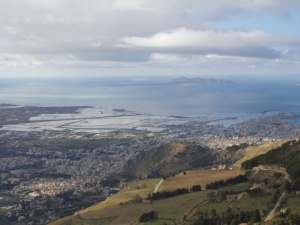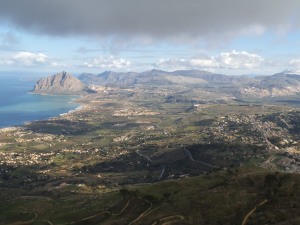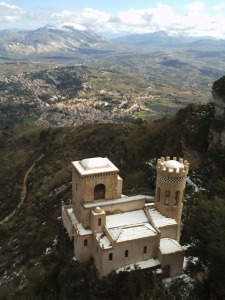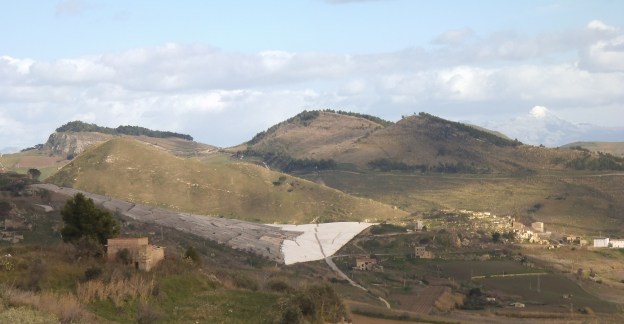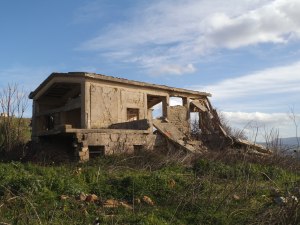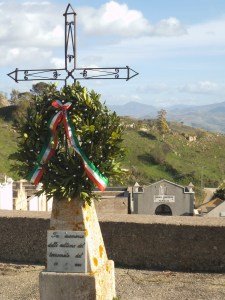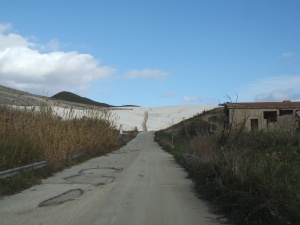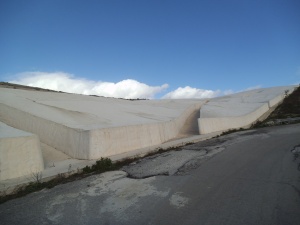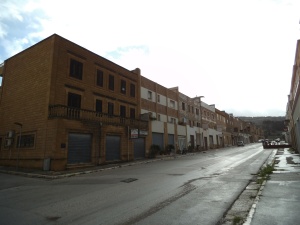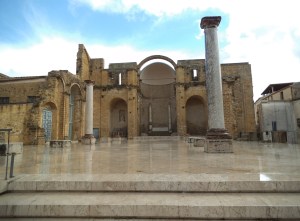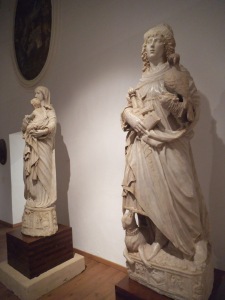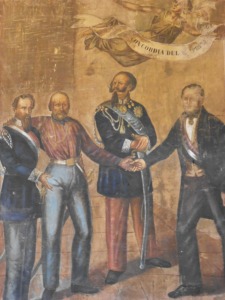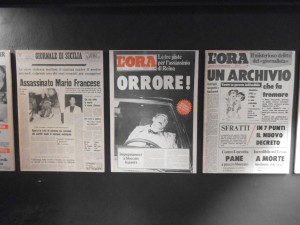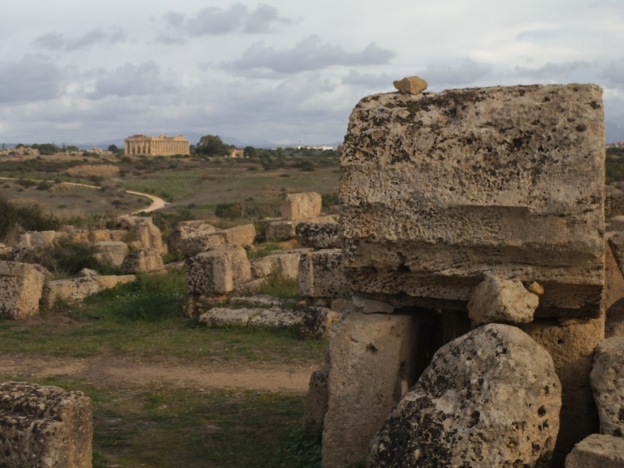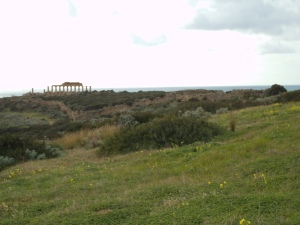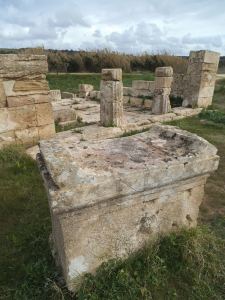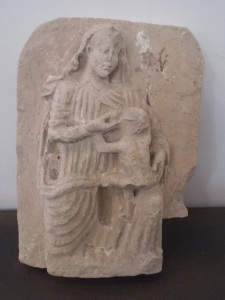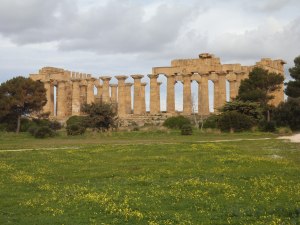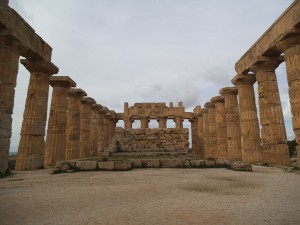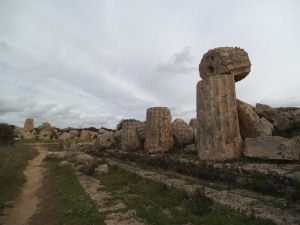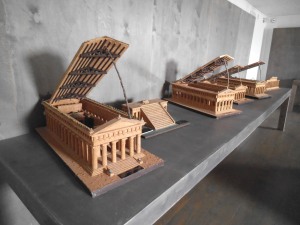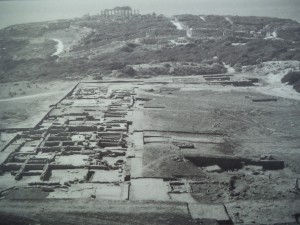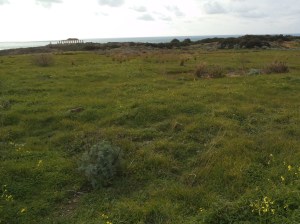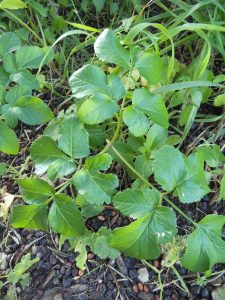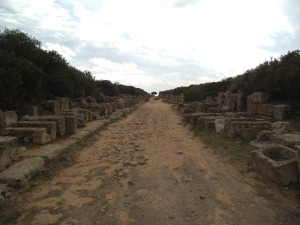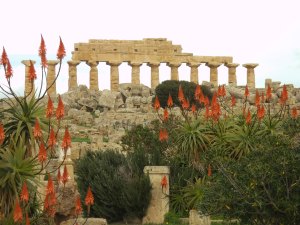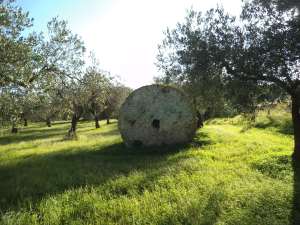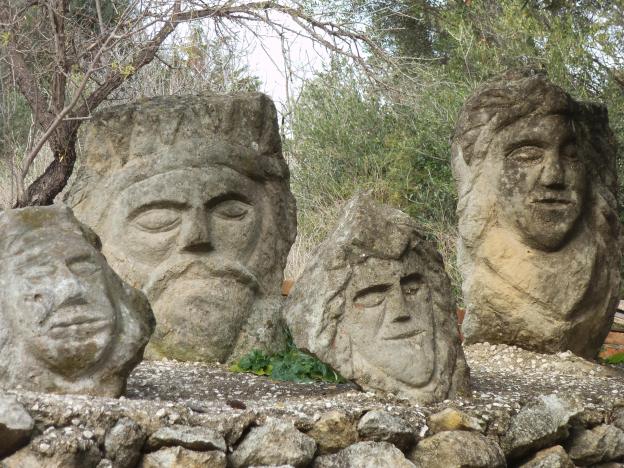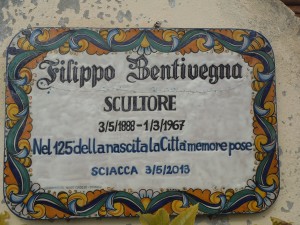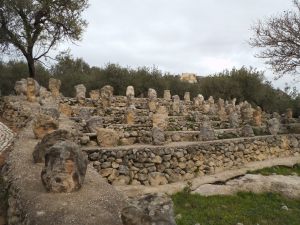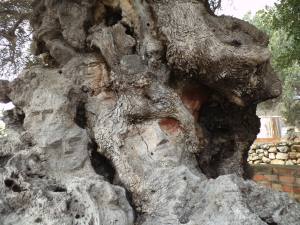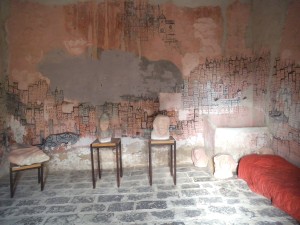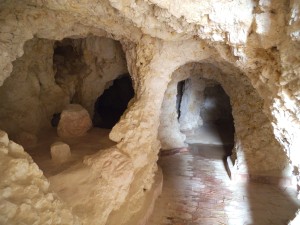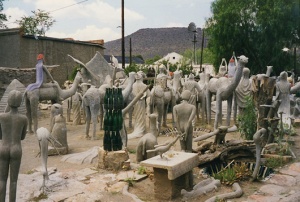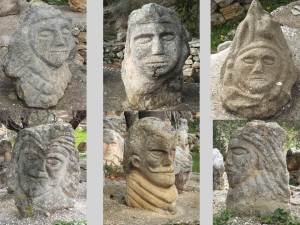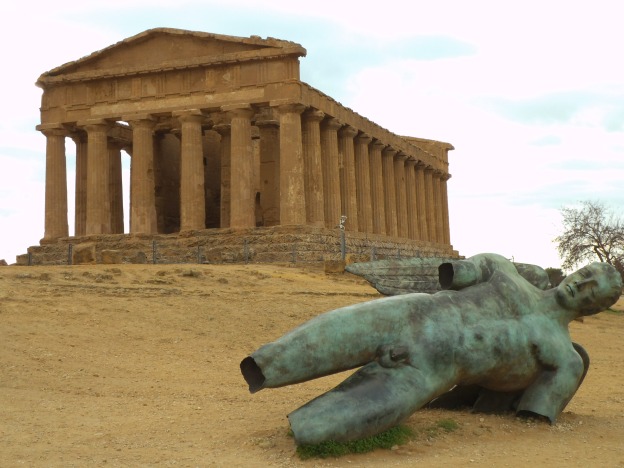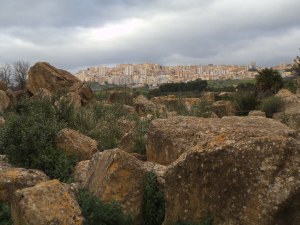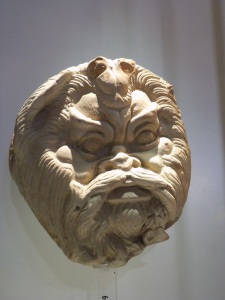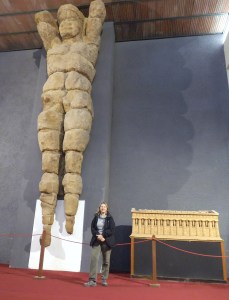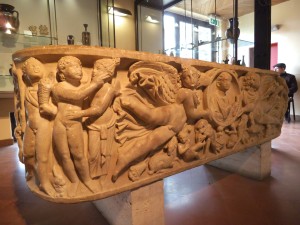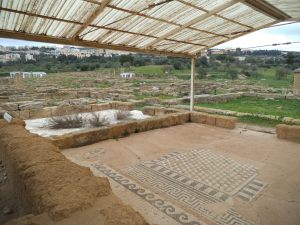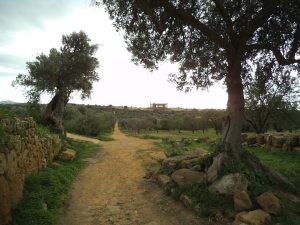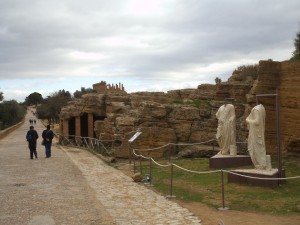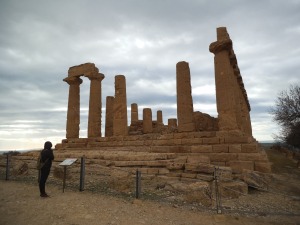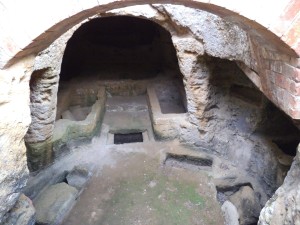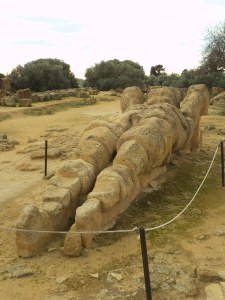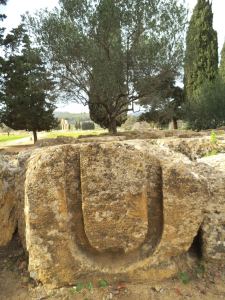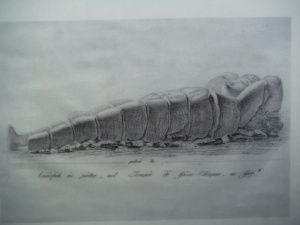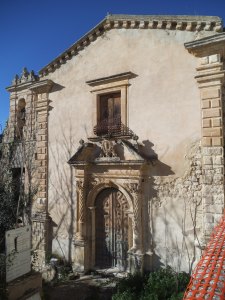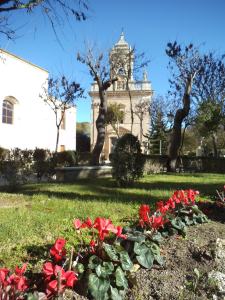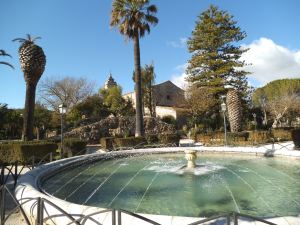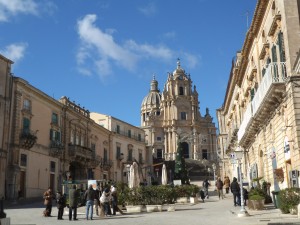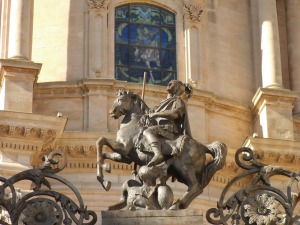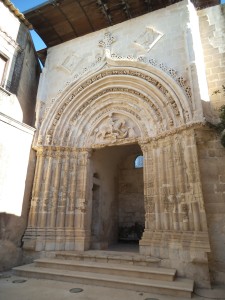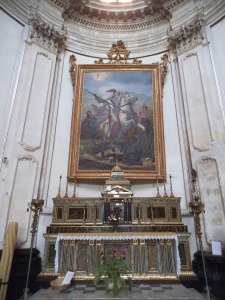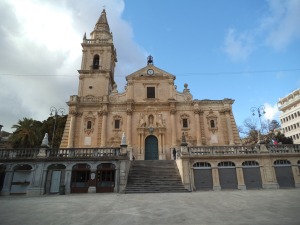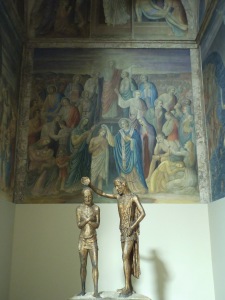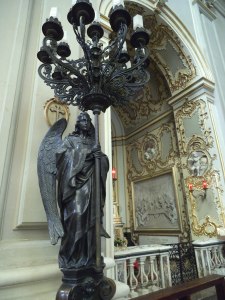I’ve been having a wonderful time in Sicily despite the recent inclement weather. The sites are interesting and the people are very friendly, especially in the smaller towns and villages. There have also been plenty of Italian motorhomers around to make me feel safe. However, the far west of Sicily is proving to be a bit more malevolent, or maybe I’ve just been unlucky.
 I pull into the large port parking of Mazara del Vallo where two Italian motorhomes are already established and I set myself up facing into the strong wind. While I’m organising myself outside the motorhome, two young Italian men approach, one flashes an ID card and claims to be the guardian of the car park. I had read about these parking scams and so reply that I think it is municipal parking. ‘Si’, he responds and then tells me it is free but he is security. I feign ignorance and say that I don’t understand. ‘I’m English. Tourist.’ In the end they just walk off, never having even asked for any money. I know the weather will be awful so I can’t imagine anyone attempting anything and the encounter is so relaxed and casual, I’m not worried.
I pull into the large port parking of Mazara del Vallo where two Italian motorhomes are already established and I set myself up facing into the strong wind. While I’m organising myself outside the motorhome, two young Italian men approach, one flashes an ID card and claims to be the guardian of the car park. I had read about these parking scams and so reply that I think it is municipal parking. ‘Si’, he responds and then tells me it is free but he is security. I feign ignorance and say that I don’t understand. ‘I’m English. Tourist.’ In the end they just walk off, never having even asked for any money. I know the weather will be awful so I can’t imagine anyone attempting anything and the encounter is so relaxed and casual, I’m not worried.
 The next day, I explore Mazara del Vallo, once an Arabic capital for the region. The narrow backstreets certainly give it a North African feel. I stumble across the Civic Museum in the old Jesuit College where I find displays of shipwreck treasure and piles of barnacle-encrusted amphorae. Next to it are the remains of the Chiesa Madre, open to the elements and continuing to collapse. Luckily, the cathedral is in a better condition with a richly decorated Baroque interior and ornately carved tombs.
The next day, I explore Mazara del Vallo, once an Arabic capital for the region. The narrow backstreets certainly give it a North African feel. I stumble across the Civic Museum in the old Jesuit College where I find displays of shipwreck treasure and piles of barnacle-encrusted amphorae. Next to it are the remains of the Chiesa Madre, open to the elements and continuing to collapse. Luckily, the cathedral is in a better condition with a richly decorated Baroque interior and ornately carved tombs.
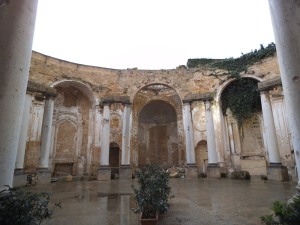
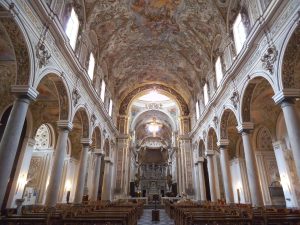
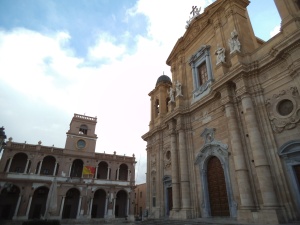 I move on to Marsala, determined to try some of the famous local product which shares the name of the town. The reason marsala wine exists is thanks to an Englishman. John Woodhouse visited the town in 1770 and, already having some knowledge of port, recognised the commercial opportunities in exporting this local fortified wine. The coast road is lined with large warehouses, some empty but some still operational. I find another English connection in the Chiesa Madre which is dedicated to the patron saint of Marsala, Thomas a Becket. When the Archbishop of Canterbury was forced into French exile in 1164 he was welcomed into the court of King William II of Sicily and, after his murder in 1170, King William II refused to marry the daughter of English King Henry II in protest. Only 7 years later and after the canonisation of Saint Thomas a Becket did the marriage finally take place.
I move on to Marsala, determined to try some of the famous local product which shares the name of the town. The reason marsala wine exists is thanks to an Englishman. John Woodhouse visited the town in 1770 and, already having some knowledge of port, recognised the commercial opportunities in exporting this local fortified wine. The coast road is lined with large warehouses, some empty but some still operational. I find another English connection in the Chiesa Madre which is dedicated to the patron saint of Marsala, Thomas a Becket. When the Archbishop of Canterbury was forced into French exile in 1164 he was welcomed into the court of King William II of Sicily and, after his murder in 1170, King William II refused to marry the daughter of English King Henry II in protest. Only 7 years later and after the canonisation of Saint Thomas a Becket did the marriage finally take place.
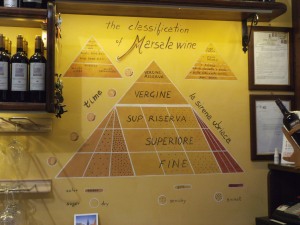 Like the rest of Italy, everything closes for a long lunch so I don’t venture out until 5pm and it is already getting dark. I’m on a marsala mission and, just beyond the Garibaldi Gate, I find Enoteca La Sirena Ubriaca. The bartender, Sonja, explains the different marsala products with the help of a chart painted on the wall behind the bar.
Like the rest of Italy, everything closes for a long lunch so I don’t venture out until 5pm and it is already getting dark. I’m on a marsala mission and, just beyond the Garibaldi Gate, I find Enoteca La Sirena Ubriaca. The bartender, Sonja, explains the different marsala products with the help of a chart painted on the wall behind the bar.
 She then offers me samples of the dry and the sweet versions of the wine. I much prefer the 7 year old sweet marsala and order a glass to sip while I chat to two charming young pilots who are also in town to taste the wine. Sonja treats us to a steady stream of spreads and pastes artistically applied to small pieces of bread and very useful in soaking up the alcohol. I’m quite taken with the spicy onion marmalade but find the almond and pistachio pastes too sweet and sickly, very similar to Nutella.
She then offers me samples of the dry and the sweet versions of the wine. I much prefer the 7 year old sweet marsala and order a glass to sip while I chat to two charming young pilots who are also in town to taste the wine. Sonja treats us to a steady stream of spreads and pastes artistically applied to small pieces of bread and very useful in soaking up the alcohol. I’m quite taken with the spicy onion marmalade but find the almond and pistachio pastes too sweet and sickly, very similar to Nutella.
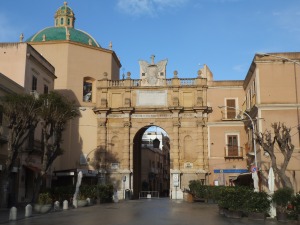 The €30 bottle of marsala is out of my budget so, after saying goodbye to Sonja, I stop by another wine shop along the street where I locate a cheaper but equally nice wine. It’s at this point that I notice a man, who I had already seen outside the first enoteca, is now taking a keen interest in me. As I pass, he says something and then begins to follow me down the street, at a reasonable distance. I wonder if I am letting my imagination run away with me but I stop at the busy intersection by the Garibaldi Gate to confirm my suspicions. He is clearly stalking me and I have no idea why. Feeling like I’m in some Hollywood spy movie, I change direction a few times and dodge down some small side streets, eventually losing him but not the uncomfortable feeling that the incident has created.
The €30 bottle of marsala is out of my budget so, after saying goodbye to Sonja, I stop by another wine shop along the street where I locate a cheaper but equally nice wine. It’s at this point that I notice a man, who I had already seen outside the first enoteca, is now taking a keen interest in me. As I pass, he says something and then begins to follow me down the street, at a reasonable distance. I wonder if I am letting my imagination run away with me but I stop at the busy intersection by the Garibaldi Gate to confirm my suspicions. He is clearly stalking me and I have no idea why. Feeling like I’m in some Hollywood spy movie, I change direction a few times and dodge down some small side streets, eventually losing him but not the uncomfortable feeling that the incident has created.
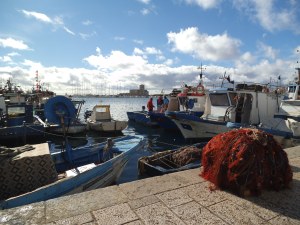 Moving on to Trapani, I spend the first day hiding out in MacDonald’s and the motorhome as the weather is appalling. Heavy rain and hail showers occur with little warning due to the strong winds which are carrying them across the Mediterranean. Luckily the next day is better and even the sun makes an appearance, so I get the chance to explore this gritty port town.
Moving on to Trapani, I spend the first day hiding out in MacDonald’s and the motorhome as the weather is appalling. Heavy rain and hail showers occur with little warning due to the strong winds which are carrying them across the Mediterranean. Luckily the next day is better and even the sun makes an appearance, so I get the chance to explore this gritty port town.
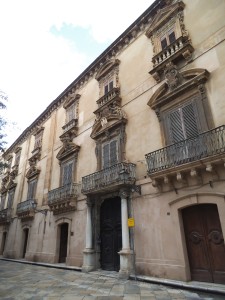 The streets are lined with crumbling palaces and churches giving Trapani old town an air of decay. As I walk by the gardens of Villa Margherita, I notice a good-looking, young man is following me. I stop and feign interest in a shop window filled with local football kit which forces him to make his move. All I catch is the word ‘bellissima’, which means beautiful, but when I reply that I don’t speak Italian, he scarpers. I guess I should feel flattered but actually the whole encounter seemed a bit seedy.
The streets are lined with crumbling palaces and churches giving Trapani old town an air of decay. As I walk by the gardens of Villa Margherita, I notice a good-looking, young man is following me. I stop and feign interest in a shop window filled with local football kit which forces him to make his move. All I catch is the word ‘bellissima’, which means beautiful, but when I reply that I don’t speak Italian, he scarpers. I guess I should feel flattered but actually the whole encounter seemed a bit seedy.
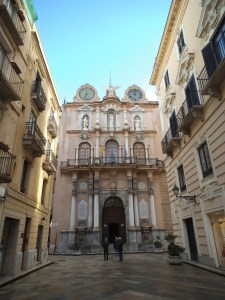 Luckily, there are a few shining lights in the old town to take my mind off it, such as the 17th century Town Hall with twin clocks, and the Jesuit College Church, a feast of Baroque marble and stucco, where the staff make me feel like one of their flock and send me on my way with a little prayer card and some hope.
Luckily, there are a few shining lights in the old town to take my mind off it, such as the 17th century Town Hall with twin clocks, and the Jesuit College Church, a feast of Baroque marble and stucco, where the staff make me feel like one of their flock and send me on my way with a little prayer card and some hope.
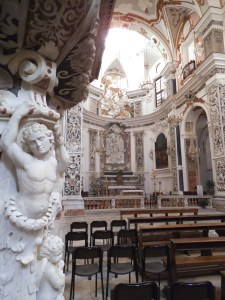
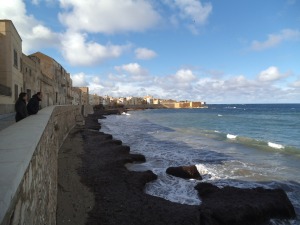 My walk along the breezy but deserted Lungomare (seafront promenade) is uneventful and my faith in Sicily’s friendliness is further restored when I pass through the fishing quarter and find a local fisherman mending his nets. I watch him for a while, then ask if I can take a photo, and he’s happy for me to do so. In my poor Italian, I ask about the black and white photos on the shelf behind him. His father and his brothers were also fishermen but he admits that the younger generation are not interested in the hard life of fishing. It seems to me that they are too busy scamming or propositioning the tourists!
My walk along the breezy but deserted Lungomare (seafront promenade) is uneventful and my faith in Sicily’s friendliness is further restored when I pass through the fishing quarter and find a local fisherman mending his nets. I watch him for a while, then ask if I can take a photo, and he’s happy for me to do so. In my poor Italian, I ask about the black and white photos on the shelf behind him. His father and his brothers were also fishermen but he admits that the younger generation are not interested in the hard life of fishing. It seems to me that they are too busy scamming or propositioning the tourists!
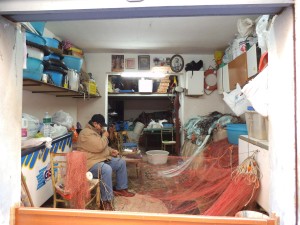
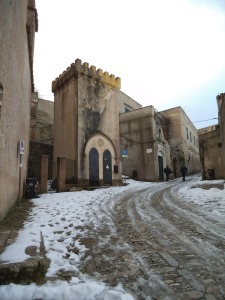 Like the Wicked Witch of the West in the Wizard of Oz, Erice is melting. After several days of storms, during which the hilltop town was blanketed in snow and cut off, the sun has come out and is turning the streets into slushy streams. It’s not the most romantic of conditions under which to view the ancient city of Eryx, supposedly the site where Daedalus landed after fleeing from Minos. In season, a trip to Erice usually starts with a ride on a cable car offering exciting views back down to Trapani, the coastal salt pans and the Egadi Islands. This time of year it involves a drive up a steep road to get the same views but it is definitely worth it.
Like the Wicked Witch of the West in the Wizard of Oz, Erice is melting. After several days of storms, during which the hilltop town was blanketed in snow and cut off, the sun has come out and is turning the streets into slushy streams. It’s not the most romantic of conditions under which to view the ancient city of Eryx, supposedly the site where Daedalus landed after fleeing from Minos. In season, a trip to Erice usually starts with a ride on a cable car offering exciting views back down to Trapani, the coastal salt pans and the Egadi Islands. This time of year it involves a drive up a steep road to get the same views but it is definitely worth it.
 I’m disappointed that the museum, the castle (built on the temple of Aphrodite Erycina) and all of the churches are closed but I guess that they weren’t expecting anyone to be visiting given the extreme weather. I have the streets to myself most of the time but I do chat to a lovely local man, out walking his dog, who had no idea that he’d been cut off from civilisation. Hopefully the few residents that do live in the town year-round had a good supply of food in their cupboards as there are no supermarkets in Erice. As a last resort I’m sure they could raid the souvenir shops which stock an extraordinary selection of local products at equally extraordinary prices.
I’m disappointed that the museum, the castle (built on the temple of Aphrodite Erycina) and all of the churches are closed but I guess that they weren’t expecting anyone to be visiting given the extreme weather. I have the streets to myself most of the time but I do chat to a lovely local man, out walking his dog, who had no idea that he’d been cut off from civilisation. Hopefully the few residents that do live in the town year-round had a good supply of food in their cupboards as there are no supermarkets in Erice. As a last resort I’m sure they could raid the souvenir shops which stock an extraordinary selection of local products at equally extraordinary prices. 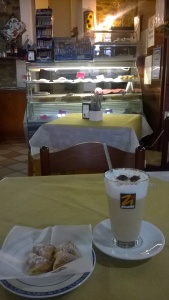 Opposite the post office is a small café where they could also dine on arancini and marsala. When I enter my nostrils are assailed with the scent of mulled wine and, though it is tempting, it is still only 10am so a hot coffee seems more appropriate. Having warmed up I continue my wander around the town, taking care not to slip on the icy north-facing steps but enjoying the magnificent views down towards Trapani and also to the east where my next destination lies. San Vito di Capo is a beach resort, though somehow I don’t think I’ll be doing any sunbathing.
Opposite the post office is a small café where they could also dine on arancini and marsala. When I enter my nostrils are assailed with the scent of mulled wine and, though it is tempting, it is still only 10am so a hot coffee seems more appropriate. Having warmed up I continue my wander around the town, taking care not to slip on the icy north-facing steps but enjoying the magnificent views down towards Trapani and also to the east where my next destination lies. San Vito di Capo is a beach resort, though somehow I don’t think I’ll be doing any sunbathing.

